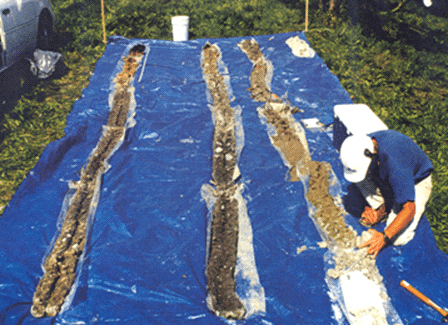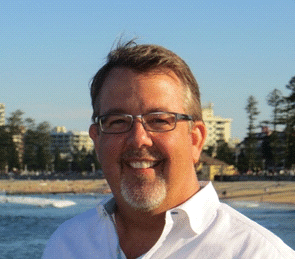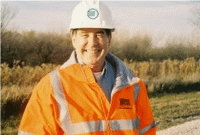Essential Step 3:
MANAGING UNANTICIPATED SUBSURFACE CONDITIONS IN THE FIELD:
Achieving Efficiency and Project Objectives
When Budgets Matter Most
Taking the Mystery Out of the Subsurface® is the single most important factor for:
- Meaningful well screen design and placement
- Reliable potentiometric-surface maps
- Ground-water-monitoring system design
- Optimum remediation-system design
- Excavation and foundation design
- Field management of unanticipated subsurface conditions
The most costly struggle for staff is lack of training in basic field procedures and subsurface analysis skills. This comprehensive online course series provides the training and identifies the key steps essential for Taking the Mystery Out of the Subsurface®.
Step 3 Synopsis
Budget consequences for erroneous well screen placement, excessive analytical or geotechnical laboratory work, speculative and substandard subsurface characterization and failing remediation systems coupled with competitive bidding have forced environmental project managers to more closely examine the process at which we approach subsurface investigations.
The third essential step is to identify and cope with unanticipated subsurface site conditions. It explains the benefits of "thinking on our feet" and addresses the common field problems that plague our industry. Attendees will benefit from this module by learning how adjusting field perspectives and procedures can improve meeting project objectives and control project costs by:
- Identifying unexpected conditions
- Managing the necessary changes needed to meet project objectives
- Streamlining field strategies
- Minimizing erroneous work based on wrong project scope assumptions before actual field conditions were determined
Everyone benefits when work is performed right the first time. Despite differing project management styles, field management can make or break a project when unanticipated site conditions are encountered.
This course module will address environmental monitoring and sampling, making sense of subsurface samples from boring-to-boring, targeting meaningful monitoring well placements, and selecting geotechnical samples that are rational and diagnostic of actual site-specific conditions.
We will briefly discuss the promoted benefits of High Resolution Site Characterization (HRSC) but how it can also fail when mis-used with short cuts. The course will conclude with strategies for weaving QA/QC into the fabric of a project helping ensure project profitability and reliability.

Everyone benefits when work is performed right the first time.
Unanticipated subsurface conditions can wreak havoc
on every part of a project.
Learn how to manage unanticipated conditions by field decisions, communication, change orders, and other actions.
Key Points
- How to identify and manage unanticipated subsurface site conditions.
- How to protect the technical and financial outcome of the project.
- Consequences of not recognizing unanticipated subsurface conditions.
- Field documentation during unanticipated conditions.
- When to ask the project manager a question.
- Use and mis-use of High Resolution Site Characterization tools.
- Helpful steps for field analysis, boring correlations, well screen placement and sample selection and testing.
- Roles and responsibilities of the project team.
- Presenting to the client out-of-scope items and change orders when they are necessary to meet the project objectives, maintain margins, and save the client money in the long run.
"With so much riding on our understanding of the subsurface, it's critical that we get it right. Every project design depends on good soil borings and this course is unmatched for discovering the process for creating good soil boring logs. This training experience confirmed my suspicion that lithology is not the same thing as stratigraphy. All my future projects will include site stratigraphy. Now I know with confidence that I'm taking the mystery out of the subsurface."
- William Silveri, New York State PG, CHMM, LEED, Principal, William Silveri, LLC.
"Every company should make this training mandatory"
- Katie Smith, PG, Senior Consultant
"I benefited greatly from the content and perspective offered by the Midwest GeoScience Group Taking the Mystery out of the Subsurface course. The course teaches USCS from a geologic perspective and focuses on understanding the geologic foundations and associated depositional environments to bring full circle the training of geologists to the applied environmental and engineering geology that necessitates accurate borehole logging."
- Matthew W. Pendleton, PG, QSD/QSP, Project Geologist, EKI Environment & Water, Inc.
"The course is far more than just a review."
- Scott F. Martin LEP, CHMM, Senior Project Manager, Environmental Engineering and Technology, AECOM
"Fantastic seminar series, I really enjoyed it."
- Mike Harol, Geo-Tech Environmental, Inc.
"Working with the soil kit was by far the most useful training we have had in years. This is such a fundamental skill, but most of us haven't actually studied soil texture since college. It was great to get our hands on known standards and refresh our memories on proper soil characterization methods. Now I know our soil logs will be accurate and reproducible. Worth every penny!"
- Betsy Schamberger, President/Owner. Moonstone Environmental.
Instructors Bio
 Dan Kelleher, PG, CIPM is a hydrogeologist and co-founder of Midwest GeoSciences Group which was formed to simply help consultants do a better job preparing accurate and complete soil boring logs.
Dan Kelleher, PG, CIPM is a hydrogeologist and co-founder of Midwest GeoSciences Group which was formed to simply help consultants do a better job preparing accurate and complete soil boring logs.
Dan is recognized for his technical expertise in quantitative hydrogeology (in porous and fractured media), geotechnical analysis of sedimentary sequences, aquifer testing, fractured rock hydrogeology, and predictive ground water modeling. Course participants will benefit from Dan's experience with field analysis from boring to boring in order to utilize QA/QC and help identify unexpected conditions as soon as they arise.
Dan received his bachelor's degree in Geology from Monmouth College and his master's degree in Hydrogeology from Northern Illinois University.
 Tim Kemmis, PhD, PG is a Senior Hydrogeology Consultant and Project Manager for large-scale subsurface investigations. His unique experience as both an applied researcher and consultant has enabled Tim to effectively teach staff at all levels how unravel sedimentary complexities by making fundamentally sound observations, preparing complete and accurate boring logs and confidently correlating geologic units.
Tim Kemmis, PhD, PG is a Senior Hydrogeology Consultant and Project Manager for large-scale subsurface investigations. His unique experience as both an applied researcher and consultant has enabled Tim to effectively teach staff at all levels how unravel sedimentary complexities by making fundamentally sound observations, preparing complete and accurate boring logs and confidently correlating geologic units.
Tim worked 14 years for the Iowa Geological Survey, during which he received his Ph.D., and where he:
- Carried out glacial sedimentologic investigations
- Remapped the Des Moines Glacial lobe
- Established the formal glacial stratigraphy for the lobe based on depositional environments
- Discovered a new type of hummocky glacial topography
- Determined the geometry and origin of jointing in glacial tills
- Developed a lithofacies code to decipher the history of glacial outwash and alluvial sequences
Tim worked 15 years for Earth Tech, on a variety of hydrgeologic and geotechnical projects, where he:
- Created project standards for soil boring logging and subsurface characterizations
- Provided technical and expert witness support
- Managed hydrogeologic and geotechnical projects around the world
- Mentored and trained staff
- Helped clients achieve their financial objectives when faced with technical challenges
Tim is a co-founder of Midwest GeoSciences Group and has successfully taught many courses and webinars dedicated to improving boring logs and helping geologists think on their feet.
Tim received his bachelor's degree in agricultural soil science from the University of Illinois and his master's degree in glacial geology while working as a graduate assistant at the Illinois State Geological Survey.